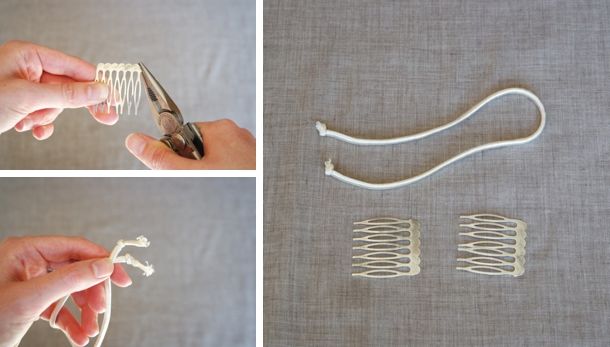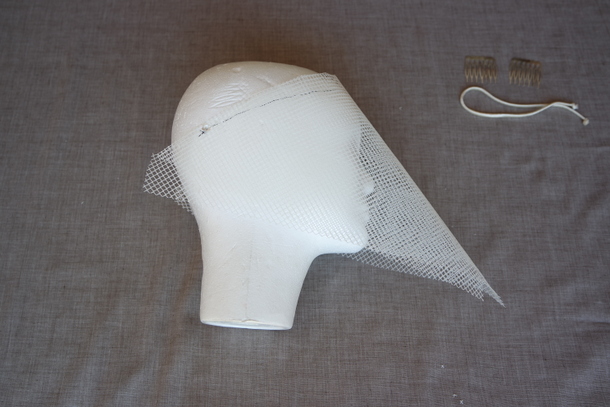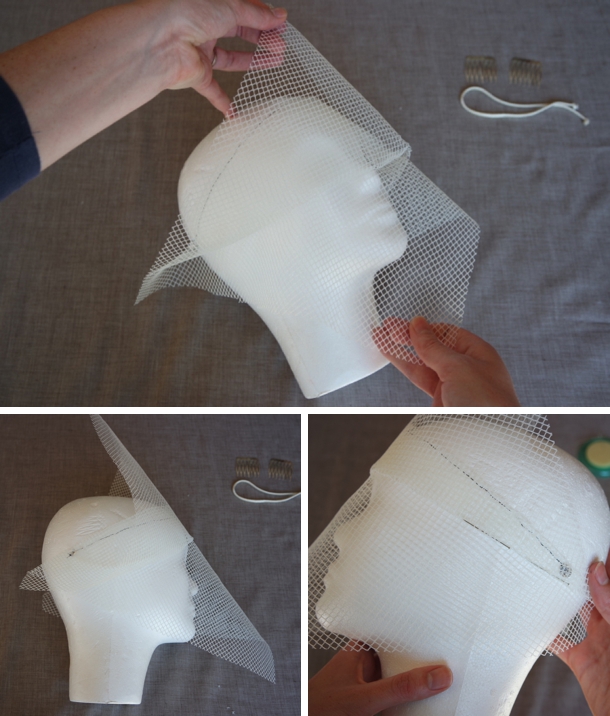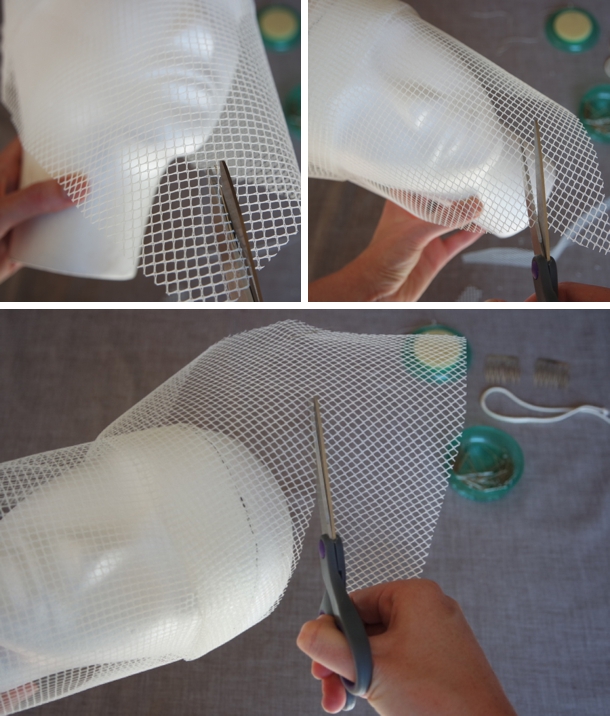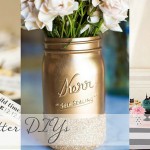I could tell it was a good day when not only did a fab city elopement editorial land in my inbox, but the lovely Rebecca of Runaway Romance offered to share some of her crafty expertise in the form of a DIY from the shoot (which we featured this morning – didn’t you love it?). As you know by now, I’m besotted with all things bling, so when I laid eyes on the sparkly birdcage veil she custom made for model Setsoali, I knew you all would want to know how to recreate this stylish and subtly glamorous look for yourselves! To be honest, I’m trying to figure out where I could possibly get away with wearing a sparkly birdcage veil myself, just so I can make one. Supermarket run? Dog park? Rugby? I’ll figure it out. Meantime, let’s get to grips with the how to. Thanks so much for sharing, Rebecca!
Supplies:
- Half a meter of veil material (I have used a medium sized, stiff weave here)
- Fastening (You have a few options in terms of what you fasten the veil with. You can use a headband, a small metal hair comb or loose bobby pins that you insert on the day.)
- Polystyrene mannikin head or a volunteer who doesn’t mind being a head model and an extra set of hands
- Sewing pins and needle
- Light thread (I have used a darker thread here so you can see it. If you can match your thread to your veil material even better!)
- Self-adhesive rhinestones (or your chosen veil detail)
- Fabric glue that dries clear (it’s pretty important you don’t see the glue once it dries)
- Florist pins (or any other sharp object that can keep your veil in place while working with it)
- Scissors
- Permanent marker
Directions:
Small note: Although this project is not difficult, it is delicate and a bit finicky at times, so I do suggest you have a general ‘crafty’ level of sorts (or the patience of a Jedi!).
1. Firstly you need to decide which type of fastening system you want to use. If you would like to use a headband, cut it and tie the ends. Clean up the loose threads. If you would like to use the metal comb separate it into small enough pieces that will hold the veil without being too prominent. Clean up any edges. (If you decide to use bobby pins you can skip on over to Step 2.)
2. Cut a rough square out of the material to start working out the shape of the veil. You shouldn’t need more than a 30cm x 30cm square. Fold one corner of the material up onto itself to help you create your square, and cut it out. Then fold your square in half to create a rough triangle.
3. To measure the basic size of your head, measure out a pieace of thread and hold it just behind your ear, then run it along your forehead to behind your other ear (or wherever you want the end of the veil to sit on your head). Try and place the thread where you would want the main fold of the veil to sit on your forehead. Cut the thread to measure.
4. Make little Xs and pin the thread onto the mannikin. This will be a different shape to your head, so just evenly place the thread around the head even if it looks further back than where you want the finished veil to sit. Once both sides are fastened, draw a line that follows the thread. This doesn’t have to be accurate. Remove the thread. You will now have a baseline to work from for your veil placement (I know it looks a little Frankenstein at the moment, but don’t worry, it will turn out great!)
5. Fasten the net triangle to the mannikin, making sure the top of the material fold is in line with your marker line. (Don’t worry that the V of the veil is directly in line with your chin – we have left enough material for you to choose the position of the veil points later.)
6. Separate the two triangles to create the top and bottom detail of your veil. Gently pull the top layer of material out and up. (At this point, if you can find an extra pair of hands to help you, it will be easier!) Position the top layer in a way that gives detail without the fold-over section covering too much of your face or eyes. (We did it in a way that the right hand side of the veil’s top fold is smaller than the left.) Once you have a basic shape you like, pin the fold. Take the veil off the mannikin and hold it to your face, repositioning the fold until it looks the way you want it to.
7. Now that you have the position of the fold right, trim the top and bottom layers of the veil. While standing in front of a mirror, make a small mark where you want the V of the veil to fall. The top layer can have a smaller point, and the top layer should come just below your jawline. From the ends of your veil cut up in a straight line towards your marked points. Remember you can always trim more off, but you can never add more! Tidy up the cut lines.
8. To fasten the folds, use your thread to tie a loop knot and then continue to sew a small way up the fold; you don’t have to sew the entire fold, however. If you need to add a few stitches to keep the top point of the veil in place you can. Tidy up the ends – you can leave the angular point as it is, or just snip it off. Add a few vertical stitches (they end up looking like an L) to old the top layer of the veil’s fold up.
9. If you chose to use a hair band, put the knot on the inside of the veil and attach. If you chose the metal comb, then push this through the material.
Now is a good time to have a break – the next part is the final little bit, but has delicate details that need some Zen!
10. Cut each of the rhinestone strips into individual stones. Peel off the plastic backing and stick each stone to the veil. I used different sized stones along the edge of the veil, with more detail on the points. To make sure the stones stick, you will need to put a small dab of glue behind each one. (The glue will dry clear, so don’t worry if a dab is a bit big!)
You now have your beautiful handmade birdcage veil that you can use for your wedding day, a dramatic engagement shoot or a sexy bachelorette party. Feel free to play around with the shapes of the fold, the colour of the material, and the finishing details to make this project completely your own!
PLEASE NOTE: While we would love you to share a link to this tutorial, permission is not granted under any circumstances to reproduce the tutorial steps and images in full.
Top image: Black Frame Photography, all other images & tutorial copyright Runaway Romance, 2015.



